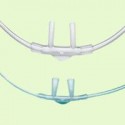MedicalResearch.com Interview with:
Brandon Hauer, Neuroscience PhD Student
Neuroscience and Mental Health Institute
Clayton Dickson, Professor
Departments of Psychology, Physiology, and the Neuroscience and Mental Health Institute,
University of Alberta, Edmonton, Canada
MedicalResearch.com: What is the background for this study? What are the main findings?
Response: Our lab is interested in the dynamics of sleep and sleep-like rhythms in the forebrain. One particular interest relates to how the brain can spontaneously switch between very different states like rapid eye movement sleep (REM, or dreaming sleep) and slow-wave sleep (deep, restorative stage of sleep).
We noticed that administering 100% oxygen to rats in an anesthetized preparation that closely models natural sleep produced an immediate and lasting switch into a slow-wave brain state. This happened as well in naturally sleeping rats. Interestingly, increasing carbon dioxide concentrations or decreasing oxygen in inspired air produced the opposite effect, namely a switch into activated or REM-like states. (more…)
Author Interviews, Critical Care - Intensive Care - ICUs, Heart Disease, Karolinski Institute / 27.08.2018
Does Routine Oxygen After Heart Attack Reduce Risk of Dying?
MedicalResearch.com Interview with:
Robin Hofmann, MD PhD
Senior consultant cardiologist and researcher
Department of clinical science and education
Södersjukhuset, at Karolinska Institute
MedicalResearch.com: What is the background for this study?
Response: Oxygen has been used to treat patients suffering a heart attack for more than a century, despite the fact that such treatment has not had any scientifically proven effect on patients who have normal oxygen levels in their blood. Since the turn of the millennium, researchers worldwide have started to question whether oxygen therapy for heart attacks is ineffective – or may even be harmful.
(more…)
Anesthesiology, Author Interviews, Pulmonary Disease / 03.06.2018
Does Nail Polish Really Affect Pulse Oxygen Reading?
MedicalResearch.com Interview with:
 Dr James Purcell
University College Cork and
South Infirmary Victoria University Hospital
Cork, Ireland
MedicalResearch.com: What is the background for this study?
Response: Nail varnish and acrylic nails are common accessories and as such are commonly encountered by an array of healthcare professionals in various scenarios when SpO2 readings may be part of patient care.. Colloquially there was a wide variety of approaches and beliefs as to whether or not these treatments impacted on SpO2 readings. This is due to the fact that the Digital Pulse oximetry relies on the passing of a wavelength of light through a pulsatile nailbed to a sensor on the opposite side of the finger tip in order to read SpO2 levels. Any potential interference to this process by polish of certain hues, or acrylic was therefor believed to impact on the resultant readings
As such it was decided to analyse the actual level of knowledge and variety of approaches to the issue by means of a multisite study involving Consultants, NCHDs, and nursing staff in areas where this issue may arise. A second, experimental part of the study was set up using healthy volunteers and venous congestion and hypoxia modelling. Nail varnish of differing hues and acrylic nails were applied and results of SpO2 readout in healthy and pathological models with and without nail treatments applies were analysed.
(more…)
Dr James Purcell
University College Cork and
South Infirmary Victoria University Hospital
Cork, Ireland
MedicalResearch.com: What is the background for this study?
Response: Nail varnish and acrylic nails are common accessories and as such are commonly encountered by an array of healthcare professionals in various scenarios when SpO2 readings may be part of patient care.. Colloquially there was a wide variety of approaches and beliefs as to whether or not these treatments impacted on SpO2 readings. This is due to the fact that the Digital Pulse oximetry relies on the passing of a wavelength of light through a pulsatile nailbed to a sensor on the opposite side of the finger tip in order to read SpO2 levels. Any potential interference to this process by polish of certain hues, or acrylic was therefor believed to impact on the resultant readings
As such it was decided to analyse the actual level of knowledge and variety of approaches to the issue by means of a multisite study involving Consultants, NCHDs, and nursing staff in areas where this issue may arise. A second, experimental part of the study was set up using healthy volunteers and venous congestion and hypoxia modelling. Nail varnish of differing hues and acrylic nails were applied and results of SpO2 readout in healthy and pathological models with and without nail treatments applies were analysed.
(more…)
 Dr James Purcell
University College Cork and
South Infirmary Victoria University Hospital
Cork, Ireland
MedicalResearch.com: What is the background for this study?
Response: Nail varnish and acrylic nails are common accessories and as such are commonly encountered by an array of healthcare professionals in various scenarios when SpO2 readings may be part of patient care.. Colloquially there was a wide variety of approaches and beliefs as to whether or not these treatments impacted on SpO2 readings. This is due to the fact that the Digital Pulse oximetry relies on the passing of a wavelength of light through a pulsatile nailbed to a sensor on the opposite side of the finger tip in order to read SpO2 levels. Any potential interference to this process by polish of certain hues, or acrylic was therefor believed to impact on the resultant readings
As such it was decided to analyse the actual level of knowledge and variety of approaches to the issue by means of a multisite study involving Consultants, NCHDs, and nursing staff in areas where this issue may arise. A second, experimental part of the study was set up using healthy volunteers and venous congestion and hypoxia modelling. Nail varnish of differing hues and acrylic nails were applied and results of SpO2 readout in healthy and pathological models with and without nail treatments applies were analysed.
(more…)
Dr James Purcell
University College Cork and
South Infirmary Victoria University Hospital
Cork, Ireland
MedicalResearch.com: What is the background for this study?
Response: Nail varnish and acrylic nails are common accessories and as such are commonly encountered by an array of healthcare professionals in various scenarios when SpO2 readings may be part of patient care.. Colloquially there was a wide variety of approaches and beliefs as to whether or not these treatments impacted on SpO2 readings. This is due to the fact that the Digital Pulse oximetry relies on the passing of a wavelength of light through a pulsatile nailbed to a sensor on the opposite side of the finger tip in order to read SpO2 levels. Any potential interference to this process by polish of certain hues, or acrylic was therefor believed to impact on the resultant readings
As such it was decided to analyse the actual level of knowledge and variety of approaches to the issue by means of a multisite study involving Consultants, NCHDs, and nursing staff in areas where this issue may arise. A second, experimental part of the study was set up using healthy volunteers and venous congestion and hypoxia modelling. Nail varnish of differing hues and acrylic nails were applied and results of SpO2 readout in healthy and pathological models with and without nail treatments applies were analysed.
(more…)
Author Interviews, Global Health, JAMA, Pulmonary Disease, Technology / 15.05.2018
Solar Powered Oxygen Could Fill Critical Gap in Underserved Areas
MedicalResearch.com Interview with:
Michael Hawkes MD PhD
Adjunct Professor
Assistant Professor
Pediatrics, Faculty of Medicine
School of Public Health
University of Alberta
MedicalResearch.com: What is the background for this study? What are the main findings?
- Pneumonia is the leading cause of mortality in children globally.
- Oxygen is an essential therapy for children with hypoxemic pneumonia, but is not available in many resource-limited and rural areas.
- Our innovation, solar powered oxygen delivery, harnesses freely available sun and air to delivery oxygen to patients independent of grid electricity.
- We performed a randomized controlled trial of solar powered oxygen delivery, compared to standard oxygen delivery using compressed oxygen cylinders in children with hypoxemia hospitalized at two centres in Uganda.
- Solar powered oxygen was non-inferior to cylinder oxygen with respect to clinical outcomes, and offers advantages in terms of reliability, simplicity, and cost.
Author Interviews, Pulmonary Disease / 30.03.2015
COPD Patients On Oxygen Therapy Should Be Warned Of Burn Risks
 MedicalResearch.com Interview with:
Gulshan Sharma, MD, MPH
Division of Pulmonary Critical Care and Sleep Medicine
University of Texas Medical Branch
Galveston, TX
Medical Research: What is the background for this study? What are the main findings?
Dr. Sharma: Thirty-five years ago, two multicenter trials reported substantial improvements in survival and quality of life with continuous oxygen therapy in the treatment of severe hypoxemia associated with chronic obstructive pulmonary disease (COPD).
Notably, aside from smoking cessation, no other medical intervention therapy has been shown to improve survival for patients with COPD. It is estimated that upto a third of the patients who are prescribed oxygen continue to smoke.
Using large claims data of Medicare beneficiaries with COPD, we found that patients with COPD who had a burn injury were more likely to have been prescribed oxygen therapy in the preceding 90 days compared to the control subjects.
Patients with COPD on oxygen who had burn injury, the face, head and neck region were more commonly involved. In the U.S. oxygen is prescribed to an estimated one million Medicare beneficiaries, based on our estimates a physician would have to treat 1,421 patients with oxygen therapy for one year to cause one burn injury. (more…)
MedicalResearch.com Interview with:
Gulshan Sharma, MD, MPH
Division of Pulmonary Critical Care and Sleep Medicine
University of Texas Medical Branch
Galveston, TX
Medical Research: What is the background for this study? What are the main findings?
Dr. Sharma: Thirty-five years ago, two multicenter trials reported substantial improvements in survival and quality of life with continuous oxygen therapy in the treatment of severe hypoxemia associated with chronic obstructive pulmonary disease (COPD).
Notably, aside from smoking cessation, no other medical intervention therapy has been shown to improve survival for patients with COPD. It is estimated that upto a third of the patients who are prescribed oxygen continue to smoke.
Using large claims data of Medicare beneficiaries with COPD, we found that patients with COPD who had a burn injury were more likely to have been prescribed oxygen therapy in the preceding 90 days compared to the control subjects.
Patients with COPD on oxygen who had burn injury, the face, head and neck region were more commonly involved. In the U.S. oxygen is prescribed to an estimated one million Medicare beneficiaries, based on our estimates a physician would have to treat 1,421 patients with oxygen therapy for one year to cause one burn injury. (more…)
Author Interviews, JAMA, Pediatrics, Pulmonary Disease / 19.08.2014
Pediatric Bronchiolitis: Improved Oxygen Saturation Reduced Hospitalizations
 MedicalResearch.com Interview with:
Suzanne Schuh, MD, FRCP(C), FAAP, ABPEM
Staff Paediatrician, Division of Paediatric Emergency Medicine
Senior Associate Scientist, Research Institute, Hospital for Sick Children
Professor of Paediatrics, University of Toronto
Medical Research: What are the main findings of this study?
Dr. Schuh: Our study shows that in previously healthy infants presenting to the Emergency Department with mild to moderate bronchiolitis (a viral lower respiratory tract disease producing breathing distress) who had their oxygen saturation measurements artificially elevated by a physiologically small amount experienced significantly reduced rate of hospitalizations within 72 hours compared to infants with unaltered oximetry readings.
(more…)
MedicalResearch.com Interview with:
Suzanne Schuh, MD, FRCP(C), FAAP, ABPEM
Staff Paediatrician, Division of Paediatric Emergency Medicine
Senior Associate Scientist, Research Institute, Hospital for Sick Children
Professor of Paediatrics, University of Toronto
Medical Research: What are the main findings of this study?
Dr. Schuh: Our study shows that in previously healthy infants presenting to the Emergency Department with mild to moderate bronchiolitis (a viral lower respiratory tract disease producing breathing distress) who had their oxygen saturation measurements artificially elevated by a physiologically small amount experienced significantly reduced rate of hospitalizations within 72 hours compared to infants with unaltered oximetry readings.
(more…)

